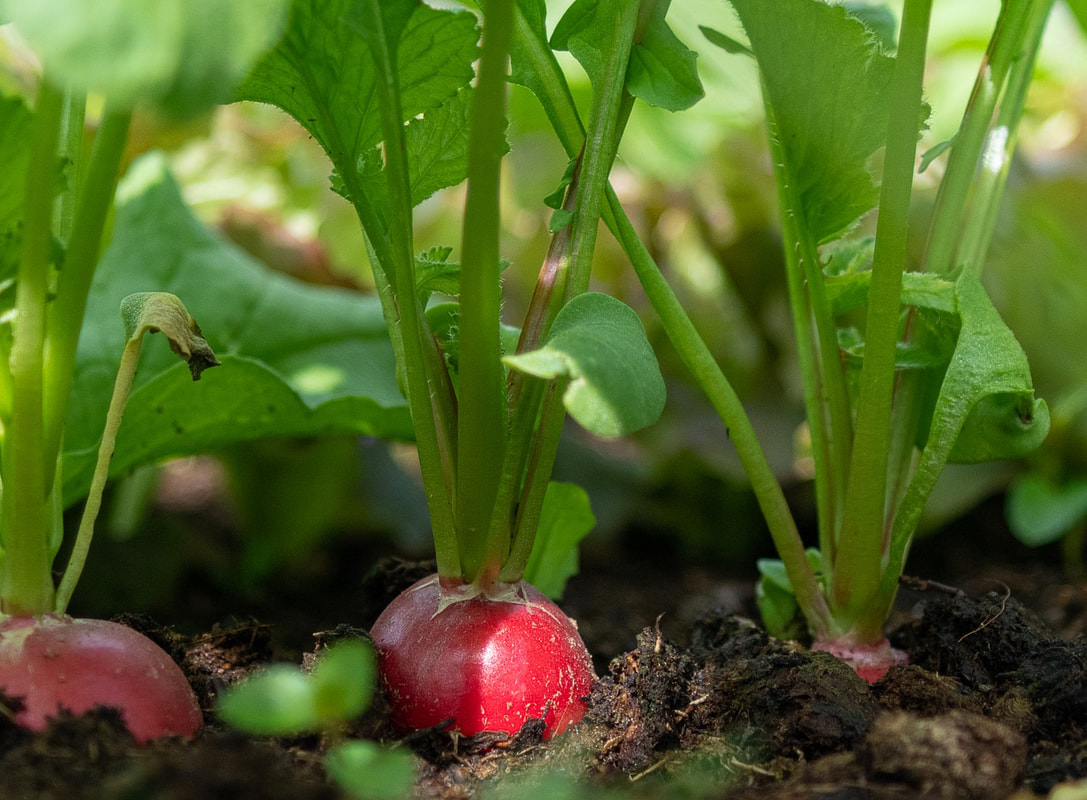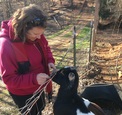Radish Recipes From Around The World
Radish season is here! We eat them raw on sandwiches. In a few weeks we should have enough lettuce to grow a salad to add them to. We also ferment the roots and stems with cabbage, hot peppers and other ingredients and the leaves are added to stir fry or turned in olive oil, seasoned and baked in the oven for crispy snacks. Any woody stems, partially wilted leaves and other leftovers are fed to the chickens, turkeys, guineas and geese.
This months harvest reminds us how much our soil has improved at Ozark Akerz Regenerative Farm over the past 7 years. Nothing but real food, from organic straw to organic raw milk has fed the soil since 2014. What was once a hay field with hardly any topsoil and hard pan clay is recovering to its natural state and is providing nutritionally rich and healthy food for two and four legged animals alike. From Bacon-Wrapped Smoked Radishes to Ethiopian Gomen and Radish Relish
We asked our social media community to share how they use the radishes and radish greens and got recipes from Canada, France, India and United States. Thank you Joni, Patrik, Gordon, Vishal, Thom and Rachel for sharing your recipes!
0 Comments
Mesquañero - Our Most Popular Hot Sauce Recipe
We’ve had our share of side-hustles at Ozark Akerz over the years. From partnering with Raleigh Brewing Company to sell Ozark Outlaw, a small batch beer made with our organically raised jalapeño peppers to crafting Christmas ornaments out of black walnut shells and brewing our popular Mesquañero™ hot pepper sauce.
Even people who didn't like hot sauce became converts after trying a sample of our mesquite smoked habanero pepper sauce. The funny thing is Mesquañero™ was a mistake! We forgot to add Ghost Jolokia peppers to one batch of pepper sauce and Mesquañero™ was born. It became our bestselling pepper sauce. Customers continue to ask for it, but we have to disappoint them. We would love to continue brewing Mesquañero™, but it’s very labor intensive and we no longer have access to a local commercial kitchen, so we've decided to discontinue it. It's not the end of Mesquañero™ though. We've decided to let it live on through you by revealing the recipe so you can brew it at home and share our bestselling pepper sauce with others.If you decide to share the recipe with friends and family or on social media, please credit Ozark Akerz Regenerative Farm. Thank you for helping us keep the recipe alive and smokin'! Ozark Akerz Regenerative Farm - Mesquañero Hot Pepper Sauce Recipe
You'll need a food processor or blender to make the hot pepper sauce.
Ingredients Base liquid:
Don’t worry about smoking too many peppers for this recipe, you can use leftovers to season dishes or make a mesquite flavored salsa. Instructions and Recipe Cut bell peppers in half and remove seeds. Soak mesquite chips before use. Put mesquite on hot coals and add whole habanero peppers and bell peppers (cut in half) to grill. Cook until soft with some blackening. Finely chop all bell peppers in a food processor or blender to create bell pepper mix. Remove chopped bell peppers to a bowl. Add and finely chop habeñeros in food processor/blender. Remove chopped habeñeros to a bowl. Add the following to food processor/blender and mix thoroughly.
After blending thoroughly, put through a strainer to remove solids. You can use the leftover pepper solids (affectionately known as gubbins) to season food or salsa. Transfer the strained liquid to mason jar(s) Although not part of the original recipe, you can mix it up by adding fresh and finely chopped garlic to a batch. Enjoy! Sue & Mike You may also like: Pineywoods Beef Jerky Recipe Bacon-wrapped Smoked Radishes |
Categories
All
Archives
April 2024
Check out our YouTube channel
Copyright © Turboxark Inc 2014-2024 - Terms of Use
|





 RSS Feed
RSS Feed